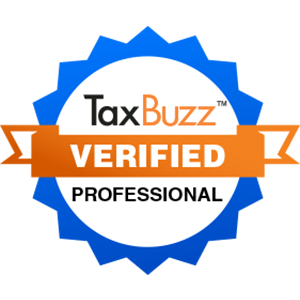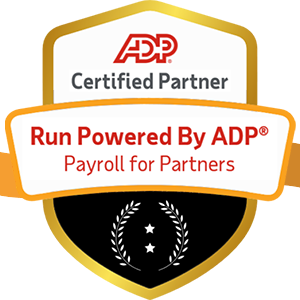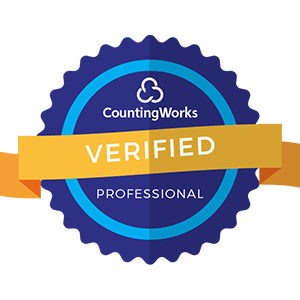
Introduction: In the rapidly evolving world of business, HR departments are facing unprecedented challenges in managing people processes efficiently. As organizations strive to stay competitive and agile, the need for streamlined, automated solutions has never been more pressing. Enter hyperautomation – a powerful combination of Robotic Process Automation (RPA) and Artificial Intelligence (AI) that is transforming the way HR teams operate. In this article, we'll explore how hyperautomation is revolutionizing people processes, and what this means for the future of HR.

Hyperautomation is a term coined by Gartner, referring to the sophisticated integration of multiple technologies, including RPA, AI, machine learning, and natural language processing. This advanced automation approach enables organizations to automate complex, end-to-end business processes, resulting in increased efficiency, accuracy, and cost savings.
In the context of HR, hyperautomation involves leveraging these technologies to streamline and optimize various people processes, such as:
By automating repetitive, time-consuming tasks and providing intelligent insights, hyperautomation empowers HR teams to focus on strategic initiatives that drive business value.
Robotic Process Automation (RPA) is a key component of hyperautomation, enabling organizations to automate rule-based, repetitive tasks without the need for human intervention. In HR, RPA can be applied to a wide range of processes, including:
RPA bots can quickly scan resumes and application forms, identifying candidates who meet specific criteria and forwarding their information to the appropriate HR team members. This streamlines the initial screening process, saving time and reducing the risk of human bias.
RPA can automate various aspects of the onboarding process, such as generating offer letters, creating employee records, and setting up user accounts. By automating these tasks, HR teams can ensure a smooth and efficient onboarding experience for new hires.
RPA bots can handle the data entry and processing involved in benefits enrollment, reducing the risk of errors and ensuring that employees receive their benefits in a timely manner.
RPA can help HR teams stay compliant with various regulations by automating the generation of reports and ensuring that all required documentation is up-to-date.
By leveraging RPA, HR departments can significantly reduce the time and effort spent on manual, repetitive tasks, allowing them to focus on more strategic initiatives that drive employee engagement and business growth.

While RPA is excellent at automating rule-based tasks, Artificial Intelligence (AI) takes hyperautomation to the next level by enabling HR teams to make data-driven decisions and personalize the employee experience. Some key applications of AI in HR include:
AI-powered tools can analyze job descriptions, resumes, and candidate profiles to identify the best-fit candidates for a given role. By leveraging machine learning algorithms, these tools can continually improve their recommendations based on historical data and feedback from hiring managers.
AI can help HR teams gain a more comprehensive understanding of employee performance by analyzing data from multiple sources, such as performance reviews, project management tools, and employee surveys. This enables managers to provide more targeted feedback and support to their teams.
AI-powered learning platforms can personalize training recommendations based on an employee's role, skills, and career aspirations. By delivering relevant, engaging content, these platforms can help employees upskill and reskill more efficiently, driving long-term career growth.
AI-driven sentiment analysis tools can help HR teams gauge employee sentiment by analyzing data from surveys, social media, and other sources. By identifying potential issues early on, HR can proactively address concerns and improve overall employee engagement.
By leveraging the power of AI, HR teams can make more informed decisions, personalize the employee experience, and drive better business outcomes.
As organizations embrace hyperautomation in HR, it's crucial to ensure that the solutions they implement are reliable, trustworthy, and aligned with the company's values. The E-A-A-T framework, which stands for Expertise, Authoritativeness, Accuracy, and Trustworthiness, provides a useful guide for evaluating and implementing hyperautomation solutions in HR.
When selecting hyperautomation tools, HR teams should look for solutions that are developed by experts in the field, with a proven track record of success. This ensures that the tools are built on a solid foundation of knowledge and best practices.
Hyperautomation solutions should be backed by reputable organizations and industry leaders, providing credibility and assurance to users. HR teams should look for tools that are endorsed by respected industry associations or have received recognition for their effectiveness.
The accuracy of the data and insights provided by hyperautomation tools is critical for making informed decisions. HR teams should prioritize solutions that have robust data validation processes and regularly update their algorithms to ensure the highest level of accuracy.
Hyperautomation tools must be transparent about how they collect, store, and use employee data. HR teams should select solutions that prioritize data privacy and security, and are compliant with relevant regulations such as GDPR.
By evaluating hyperautomation solutions through the lens of the E-A-A-T framework, HR teams can ensure that they are implementing reliable, trustworthy tools that will drive meaningful results for their organization.

As the business landscape continues to evolve, HR teams that embrace hyperautomation will be well-positioned to meet the challenges of the future. By leveraging the power of RPA and AI, organizations can streamline people processes, make data-driven decisions, and create a more engaging employee experience.
However, it's important to recognize that hyperautomation is not a replacement for human expertise and judgment. Rather, it is a tool that empowers HR professionals to focus on higher-value, strategic initiatives that drive business growth. As organizations implement hyperautomation solutions, they must also invest in upskilling their HR teams to effectively leverage these tools and adapt to new ways of working.
Moreover, as with any transformative technology, the adoption of hyperautomation in HR requires a thoughtful, strategic approach. Organizations must carefully evaluate their current processes, identify


